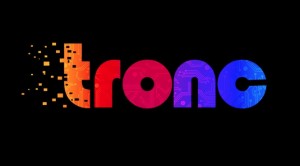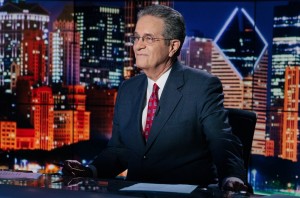For four years as owner of the Sun-Times, Michael Ferro failed to deliver on his promises of growth and innovation. While meddling in editorial affairs, selling off the company’s suburban assets and cutting jobs (including the entire photo staff), he wasted millions on ill-conceived digital ventures and other products that tanked. No wonder he had his name removed from the paper’s masthead.
So what did he do for an encore? In 2016 the ambitious tech entrepreneur bought a piece of Tribune Publishing and maneuvered his way in as chairman. The man who had done nothing to improve the city’s No. 2 newspaper was now calling the shots at the Chicago Tribune and the Los Angeles Times, among other dailies.
Once again Ferro proclaimed a grand vision. He and his minions talked about saving the journalism industry. They talked about harnessing artificial intelligence to “feed journalism into a funnel” and create a content portal that would distribute 2,000 videos a day from who-knows-where. They talked about opening bureaus of the L.A. Times in seven “global entertainment-oriented cities” — Hong Kong, Lagos, Mexico City, Moscow, Mumbai, Rio de Janeiro and Seoul.
But nothing that Ferro said or did in 2016 aroused more derision than his brainstorm to rename Tribune Publishing “tronc” (inexplicably all lower case). Supposedly an acronym for Tribune Online Content, the word also was meant to invoke a British term for the box in which tips are collected at a restaurant. Henceforth the 168-year-old mainstay of American journalism would be defined, according to Ferro, as “a content curation and monetization company focused on creating and distributing premium, verified content across all channels.”
Sanity threatened to be restored when Gannett, publisher of USA Today, entered the picture with an unsolicited bid for tronc. Ferro resisted, accusing Gannett of "trying to steal the company" with an offer that would have netted him and other shareholders a huge profit. Talks dragged on for seven months, as newspaper advertising revenues continued to plunge. By the time Ferro agreed to a deal, Gannett found it was no longer able to obtain financing and walked away.
At year’s end, Ferro continued to loom large. With the purchase of an additional 1.3 million shares of stock, he celebrated Christmas with nearly 18 percent of the company in his possession.
Other top stories on the Chicago media beat in 2016:
- Tribune Tower, the Michigan Avenue neo-Gothic landmark that’s been home to the Chicago Tribune since 1925, was sold to a Los Angeles-based developer in a $240 million deal. Owner Tribune Media, parent company of broadcast and cable properties, announced plans to move its corporate offices across the Chicago River to 303 East Wacker Drive. No word on where Tribune Media will relocate news/talk radio station WGN AM 720 or where tronc will relocate the Chicago Tribune.
-
Ron Magers, arguably the best Chicago anchorman of all time, retired from ABC-owned WLS-Channel 7 after 35 years on the air here. The outpouring of respect for him underscored the end of an era for local television news. Other notables who retired during the year included Linda Yu, Robert Jordan, Rich King, Jay Levine, Mike Parker and Gerry Kern.
- WGN-Channel 9 lived up to its brand as “Chicago’s Very Own” when the Tribune Media flagship dropped its affiliation with the CW Network and became a full-time local independent. The result was more news, more sports and interminable reruns of “Two and a Half Men” in primetime. CW promptly changed channels to Fox-owned WPWR-Channel 50.
- CBS Radio, owner of seven of Chicago’s blue-chip stations (including top-rated all-news combo WBBM AM 780 and WCFS FM 105.9 ), announced plans to spin off its entire station group through an initial public offering. Established in 1928 by Chicago-born William S. Paley, the CBS empire had been built on the radio business it would now jettison.
- Ebony magazine cut its 71-year ties to Chicago when Johnson Publishing sold the legendary African-American monthly magazine to a private equity firm in Austin, Texas. Included in the deal was Jet magazine, which earlier had converted to a strictly digital format.
- Pressures for higher profits at Crain’s Chicago Business led to the surprise resignations of publisher David Snyder, a 33-year veteran of the company, and associate publisher Lisa Emerick.
- Chicago’s Better Government Association endured a tumultuous year that included a major staff shakeup and a vote to unionize reporters. But the nonprofit investigative news organization achieved a tremendous victory by securing the release of thousands of private messages regarding city business from Mayor Rahm Emanuel’s personal email accounts.
- Paddock Publications, owner of the Daily Herald, defied industry trends by expanding outside its core suburban market and investing in print publications throughout Downstate Illinois. The privately held company acquired 12 daily and weekly newspapers from GateHouse Media, and four weekly newspapers and a printing plant in central Illinois from Gold Nugget Publications.
- On the eve of its 25th anniversary as Chicago’s original sports/talk station, WSCR AM 670 rode the Chicago Cubs historic World Series victory to top ratings and revenue. While The Score basked in its good fortune, WGN AM 720 (which had been radio home of the Cubs for the better part of 90 years) could only listen in from next door.
- Fox-owned WFLD-Channel 32 became a worldwide laughingstock after the executive producer of “Good Day Chicago” ordered female reporters not to wear hats during outdoor live shots in winter. The producer blamed Fox 32’s news director for the idiotic edict, which was later rescinded. Within a few months, both men were gone.




